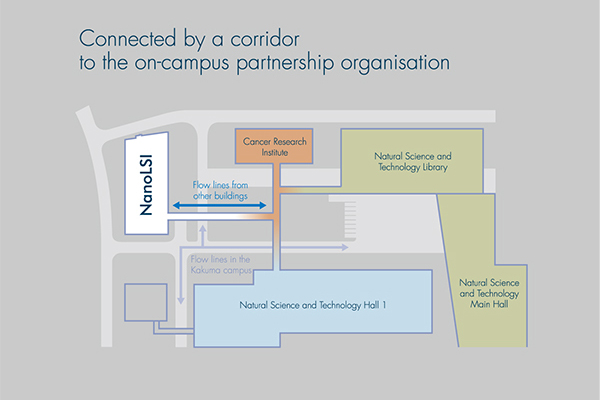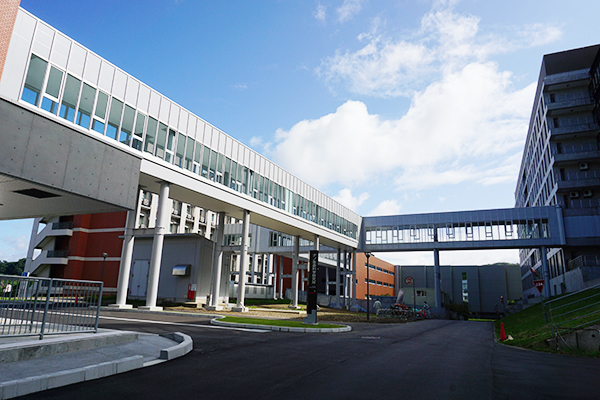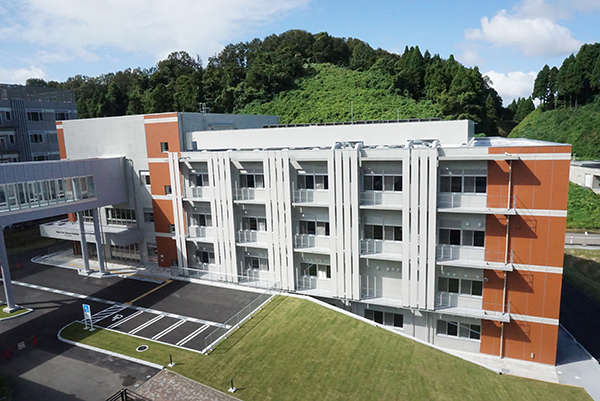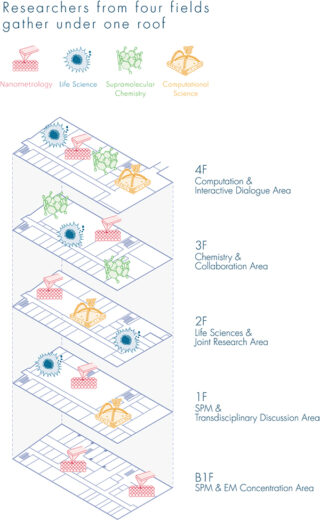Improvement of the research environment of the Nano Life Science Institute started immediately after its establishment in October 2017. We have created and enabled a variety of transdisciplinary research by renovating the existing facilities of the university to create a comfortable, collaborative research environment. However, there were still issues to be solved, such as shortage of space for research exchange, dispersion of experimental equipment, and inadequate open research space where researchers from different fields work.
The new building of the Nano Life Science Institute, completed in September 2020, meets all these challenges. In order to develop the “uncharted nano-area” of life sciences that the NanoLSI aims to explore, it is essential to engage in transdisciplinary research from new perspectives. A research building under one roof, where researchers from different fields come together in one building, is truly an essential research environment for NanoLSI.
Research under one roof
The basic concept of the NanoLSI Research Building is “research under one roof”. It is an interdisciplinary and open lab environment without conventional organizational structures based on individual laboratories. We have optimized equipment and environment for the research theme on each floor. Anyone can conduct their research anywhere.


Cooperation with the Cancer Research Institute (CRI) and the Institute of Science and Engineering is essential for nano-LSI research. For this reason, each research institute building is connected by a corridor. We, NanoLSI, CRI and the Institute of Science and Engineering, will work closely together and carry out our research in unison.
The core of NanoLSI’s research is based on Scanning Probe Microscopy (SPM) technology, which is currently the only microscope capable of observing protein and cell dynamics in liquids at the nanoscale, that is, atomic and molecular size resolution without staining biological samples. Researchers at the NanoLSI independently developed this state-of-the-art technology.
SPM observation at the nanoscale is extremely sensitive to external influences such as vibrations and temperature, so great care must be taken in preparing the research environment. In addition, each instrument must be individually controlled and adjusted to suit the sample to be observed.
The NanoLSI Research Building provides an optimum research environment to meet these critical requirements. The entire building has been thoroughly vibration-isolated, and on the basement floor, which is vibration-resistant and has a stable environment with minimal temperature fluctuations, there is a laboratory where a wide selection of SPMs can be individually installed and adjusted, ranging from the latest models currently under development to microscopes shared by the joint research programme. SPMs are centrally located here, and, in addition, an electron microscopy (EM) room for the development of SPMs is also located in the same area.
Under one roof, transdisciplinary research is generated, nurtured and linked to results. The new research building provides a world-class research environment that is truly befitting of a world-class research centre.



